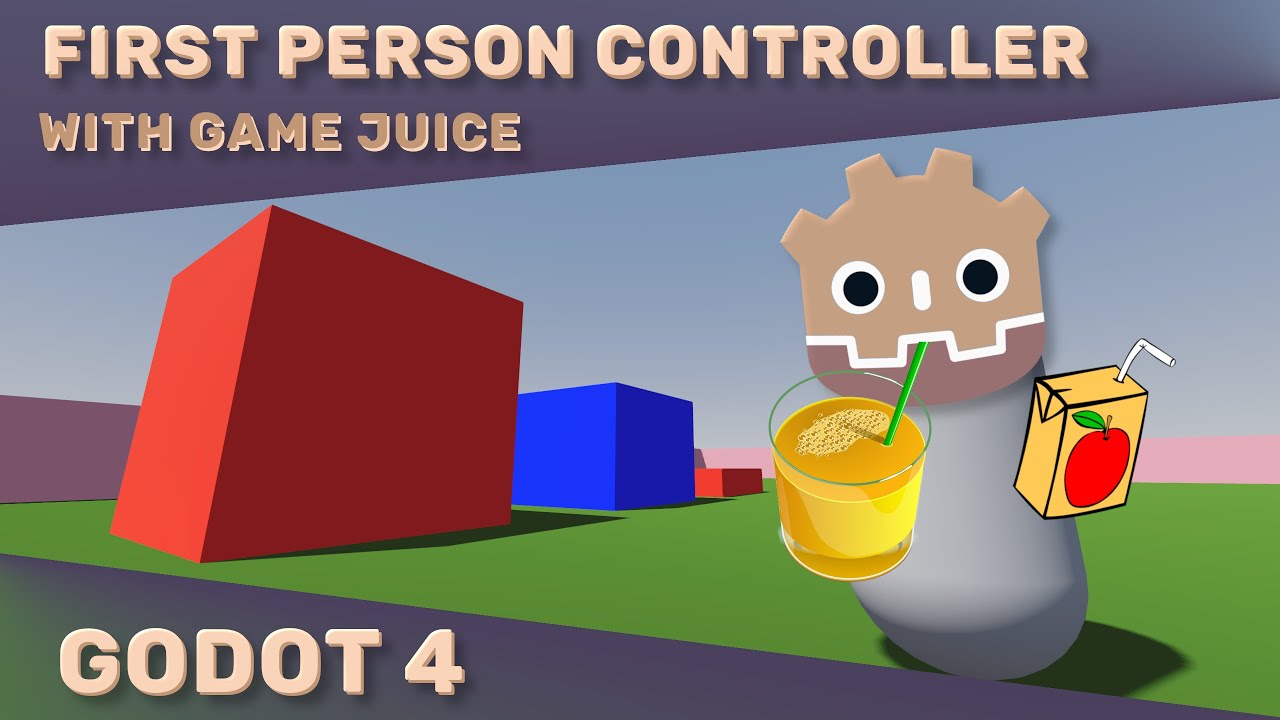Code Class - 2D Player Movement in Unity
Summary
TLDRThis Unity tutorial guides you through creating a platformer character controller with smooth movement and jump mechanics. The video covers essential aspects such as ground detection, friction handling, directional movement, and jump restrictions. It demonstrates how to set up efficient character control by adjusting drag, separating movement into ground and jump speeds, and implementing acceleration. The tutorial also teaches how to prevent infinite jumping and clean up code for better organization and readability. For advanced mechanics like state machines and animations, the video hints at future tutorials.
Takeaways
- 😀 The ground check collider is set as a trigger to avoid stopping the player from falling through gaps, mimicking old platformer mechanics like Super Mario Brothers.
- 😀 Ground decay (drag value) is introduced to control how fast the character slows down, making it easier to adjust friction behavior when the player is on the ground.
- 😀 Friction is only applied when the player is grounded or falling, ensuring smooth movement when jumping.
- 😀 The character's facing direction is dynamically adjusted based on horizontal movement input, flipping the character's sprite accordingly.
- 😀 Jumping is restricted to when the character is grounded, preventing infinite jumping or bunny hopping.
- 😀 A check is added to prevent friction from applying while moving horizontally, ensuring responsive and non-sticky movement.
- 😀 Acceleration mechanics are added to incrementally increase the character's speed while preventing infinite speed by clamping the value.
- 😀 Speed variables are separated into 'ground speed' and 'jump speed', giving the player more control over movement and jump height.
- 😀 The code is modularized with smaller, reusable functions that improve readability and ease of maintenance.
- 😀 Functions are renamed for better clarity, e.g., 'getInput' is changed to 'checkInput' and 'moveWithInput' is renamed to 'handleXMovement'.
- 😀 The code review process ensures better organization, with grouped variables and comments that clarify each function's purpose and logic.
Q & A
Why is the 'grounded' boolean important for platformer movement?
-The 'grounded' boolean checks whether the player is on the ground or in the air. It's crucial for controlling jump behavior, ensuring that the player can only jump when grounded and preventing infinite jumps when the player is not touching the ground.
What is the purpose of setting the collider to a trigger?
-Setting the collider to a trigger ensures that the collider doesn't physically stop the player from falling through platforms. This helps in implementing better platformer mechanics where the player can pass through thin or edge platforms without being blocked.
How does the 'ground Decay' value affect the player's movement?
-The 'ground Decay' value controls how quickly the player slows down when not moving. A smaller value makes the player stop faster, while a larger value allows for a slower deceleration. It's used to create a more responsive, smooth feeling in platformer movement.
What issue is addressed by adding the X input check for 'Decay'?
-The X input check prevents the ground Decay from being applied when the player is moving horizontally. This ensures that the player can maintain their speed and only decelerate when no horizontal input is given.
How is the Y-axis movement controlled in the updated platforming system?
-Y-axis movement is restricted to a 'jump' function, where the player's Y velocity is adjusted based on jump input. The movement only happens when the player is grounded, ensuring more controlled and realistic jumping behavior.
What is the significance of separating 'ground speed' and 'jump speed'?
-By separating 'ground speed' and 'jump speed,' the player’s horizontal and vertical movement speeds are controlled independently. This allows for more fine-tuned control over how the player moves on the ground and jumps in the air.
What effect does setting friction to zero have on player movement?
-Setting the friction to zero prevents the player from sticking to walls while in the air. This makes sure that, while jumping or falling, the player can move freely without being hindered by surfaces that they aren’t grounded on.
How does the character facing the direction of movement work?
-The character's direction is determined by the sign of the X input. The player's local scale is then adjusted to flip the character’s orientation (positive or negative), making it face the direction they are moving in.
What role does acceleration play in the movement system?
-Acceleration allows for gradual speed increases rather than an instant full speed. This creates smoother movement transitions and a more natural feeling of acceleration when the player moves, instead of sudden changes in velocity.
Why is it important to add a 'clamp' function for speed?
-The 'clamp' function is used to limit the player’s speed, ensuring it doesn't grow infinitely with the acceleration. By clamping the speed, the player’s movement remains within reasonable bounds, preventing issues like moving too fast.
Outlines

This section is available to paid users only. Please upgrade to access this part.
Upgrade NowMindmap

This section is available to paid users only. Please upgrade to access this part.
Upgrade NowKeywords

This section is available to paid users only. Please upgrade to access this part.
Upgrade NowHighlights

This section is available to paid users only. Please upgrade to access this part.
Upgrade NowTranscripts

This section is available to paid users only. Please upgrade to access this part.
Upgrade NowBrowse More Related Video

#1 FPS Movement: Let's Make a First Person Game in Unity!

Juiced Up First Person Character Controller Tutorial - Godot 3D FPS

Player Movement & Animation | 2D Platformer Game Tutorial with Construct 3 #1

2D Top Down игра на Unity с нуля #5 | Анимация главного героя

SIMPLE 3rd Person Character Controller Godot 4 Tutorial

Tutorial Membuat Game Platformer dengan Construct 2, Part#1: Player Animation
5.0 / 5 (0 votes)